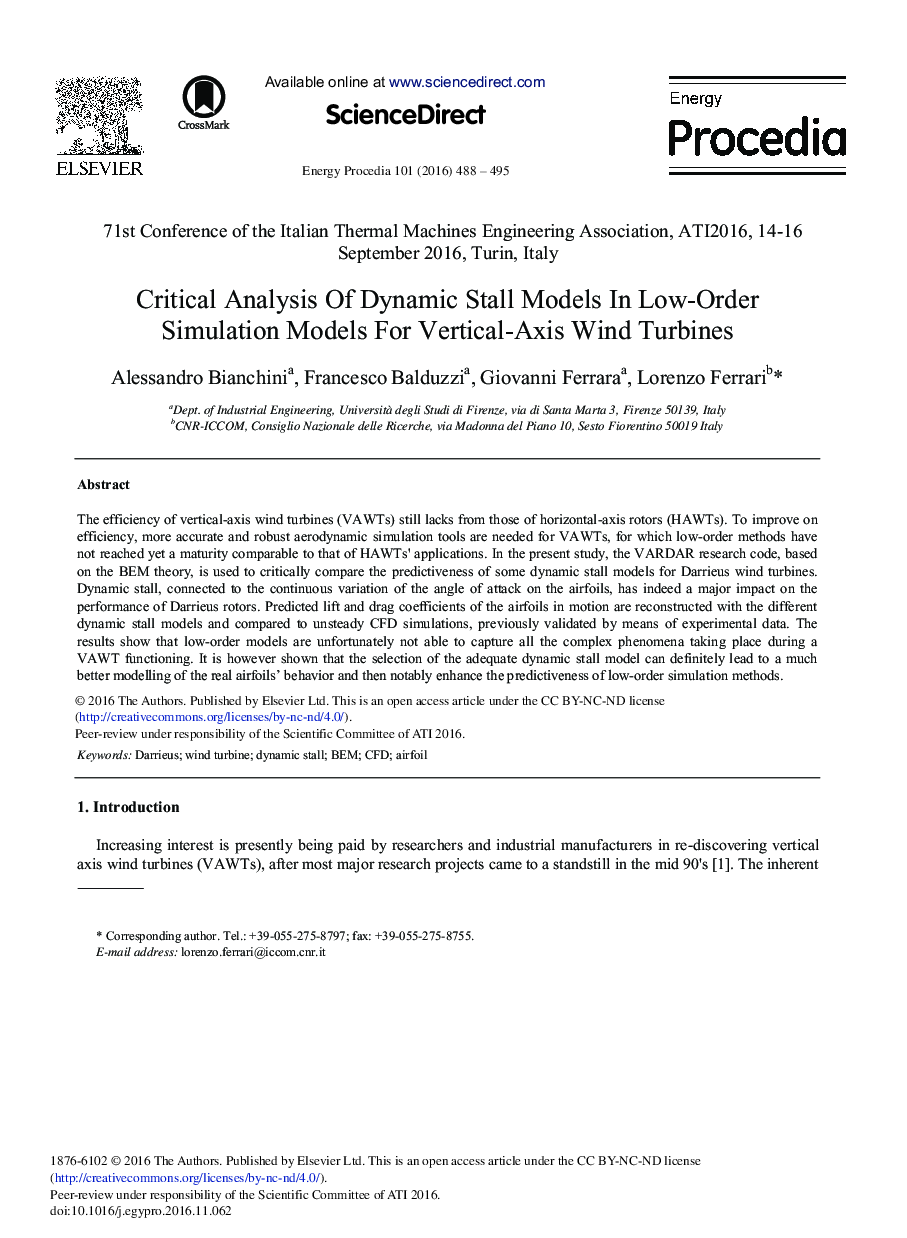| Article ID | Journal | Published Year | Pages | File Type |
|---|---|---|---|---|
| 5446490 | Energy Procedia | 2016 | 8 Pages |
Abstract
The efficiency of vertical-axis wind turbines (VAWTs) still lacks from those of horizontal-axis rotors (HAWTs). To improve on efficiency, more accurate and robust aerodynamic simulation tools are needed for VAWTs, for which low-order methods have not reached yet a maturity comparable to that of HAWTs' applications. In the present study, the VARDAR research code, based on the BEM theory, is used to critically compare the predictiveness of some dynamic stall models for Darrieus wind turbines. Dynamic stall, connected to the continuous variation of the angle of attack on the airfoils, has indeed a major impact on the performance of Darrieus rotors. Predicted lift and drag coefficients of the airfoils in motion are reconstructed with the different dynamic stall models and compared to unsteady CFD simulations, previously validated by means of experimental data. The results show that low-order models are unfortunately not able to capture all the complex phenomena taking place during a VAWT functioning. It is however shown that the selection of the adequate dynamic stall model can definitely lead to a much better modelling of the real airfoils' behavior and then notably enhance the predictiveness of low-order simulation methods.
Related Topics
Physical Sciences and Engineering
Energy
Energy (General)
Authors
Alessandro Bianchini, Francesco Balduzzi, Giovanni Ferrara, Lorenzo Ferrari,
